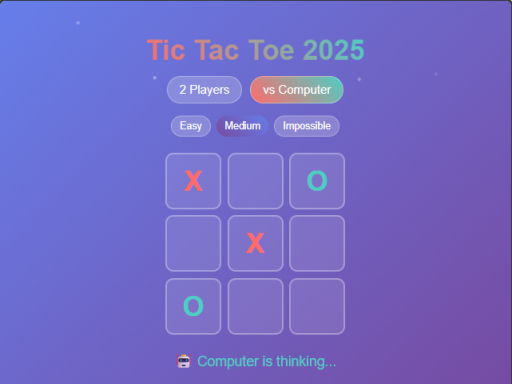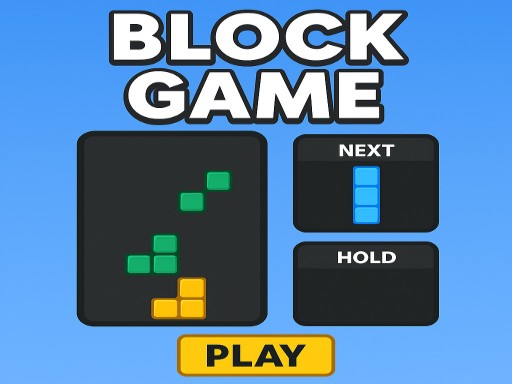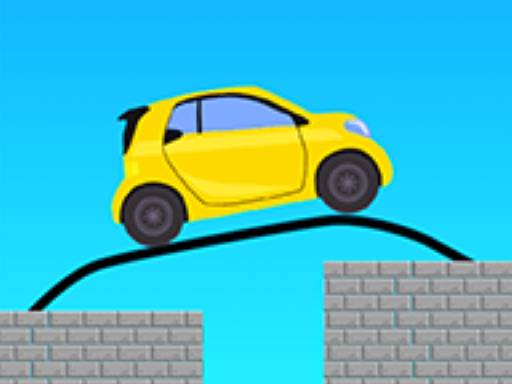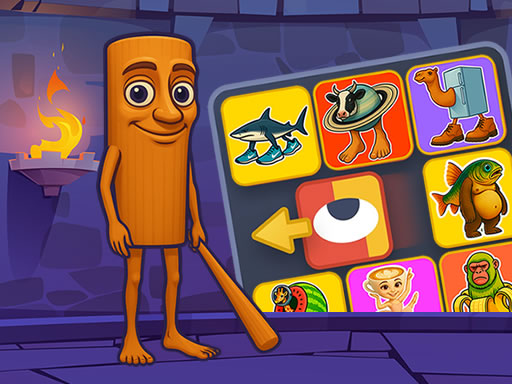Balance the Buoyancy
About Balance the Buoyancy
Dude, you *have* to hear about this game I stumbled upon. Seriously, put down whatever you're doing, because I need to tell you about *Balance the Buoyancy*. I know, the name sounds a bit… technical, right? Like something out of a physics textbook. But trust me, it’s one of those rare gems that just sinks its hooks into you from the first moment, and before you know it, three hours have vanished into thin air. It's not just a puzzle game; it's an *experience*, a delicate dance between strategy, intuition, and pure, unadulterated tension.
You know how I’ve always been drawn to games that make you really *think*, that challenge your spatial reasoning in ways you didn't even know were possible? Well, this one takes that love and just… elevates it. The premise is deceptively simple, almost elegant in its minimalism. You’ve got a boat, right? A proper little wooden vessel, sometimes sleek and modern, sometimes a charming, rustic fishing boat, and it’s perched precariously on top of a tower of blocks. Your goal? Get that boat safely down to solid ground. Sounds easy, doesn't it? That’s where the genius of it all kicks in.
Because you don't just *drop* it. Oh no, that would be far too simple. You have to remove the blocks, one by one, from beneath it. And here's the kicker: if that boat tips, if it even *thinks* about taking an uncontrolled tumble, it’s game over. Instantly. The screen flashes, the boat splinters, and you’re back to the drawing board, a fresh tower mocking your previous miscalculation. It’s brutal, it’s unforgiving, and honestly, it’s absolutely addictive.
What I love about games like this is that initial moment of surveying the landscape. You load into a new level, and there it is: your boat, often looking a little too comfortable up there, perched on a veritable skyscraper of different shaped and sized blocks. Some are long, some are short, some are fat, some are thin. They’re made of different materials too – you can almost feel the weight of a dense stone block versus the lighter, more fragile-looking wooden ones. And you just stand there, virtually speaking, controller in hand, trying to mentally map out the structural integrity of this bizarre, gravity-defying sculpture. You're thinking, "Okay, if I pull *that* one, what happens to the weight distribution? Will the whole thing shift left? Will it wobble? Or will it just gracefully settle?"
The brilliant thing about this is that it’s not just about brute force or speed. It's about understanding physics on an intuitive level. You can almost feel the weight of the boat pressing down, the subtle give and take of the blocks beneath it. You learn to read the slight leans, the almost imperceptible shudders that tell you, "Nope, don't touch that one, not yet." It’s like a high-stakes game of Jenga, but with a precious cargo that has a very low tolerance for shenanigans.
The early levels, they lull you into a false sense of security, you know? They’re straightforward enough to teach you the ropes, to get you comfortable with the controls – a simple tap to select a block, another tap to remove it. But then, just when you start feeling like a master architect, the game throws a curveball. Suddenly, there are blocks that are *stuck* together, or blocks that are on timers, or blocks that are made of ice and slide away if you’re not careful. The environment itself starts to play a role; sometimes you're dealing with a wobbly platform, or a gentle current in the water below that will nudge your boat if it lands too close to the edge.
That’s when the real magic happens. You'll find yourself leaning forward, eyes glued to the screen, holding your breath as you make a critical decision. There's this one level I remember, it had the boat balanced on a single, tall, narrow block, which was itself resting on a wider, but unstable, base. My heart was genuinely pounding. I spent a good five minutes just staring at it, trying to visualize the cascade of events if I pulled the wrong piece. Do I try to widen the base first, hoping the tall block doesn't just topple? Or do I try to shorten the tower, knowing that any slight tremor could send it all crashing down?
The satisfaction when a strategy finally clicks into place, when you see that tower gracefully descend, piece by piece, and the boat settles with a gentle *thud* onto the ground… man, it’s an incredible rush. It’s not the explosive, adrenaline-fueled rush of an FPS, but a deep, resonant feeling of intellectual triumph. It's that "aha!" moment, amplified. You can almost hear the gears turning in your own head as you figure out the optimal sequence, the perfect timing.
And timing, by the way, becomes crucial. Sometimes you need to remove a block quickly to prevent a chain reaction, other times you need to wait, letting the physics settle, allowing the tower to find its new equilibrium before making your next move. It’s a delicate dance, a constant negotiation with gravity. The sound design really helps here too; you hear the subtle creaks and groans of the blocks, the soft *clink* as one settles against another, all building to this incredible tension. When the boat starts to wobble, there’s a distinct, heart-stopping sound, a kind of groaning timber or a scraping stone, that instantly tells you you’re on the brink of disaster. Your shoulders tense up, your grip on the controller tightens, and you're just praying you can recover.
What's fascinating is how the game encourages experimentation without being overly punishing. Yes, failure is instant, but restarting is just as quick. So you’re never really frustrated for long. Instead, you're curious. "What if I tried *this* instead?" you'll ask yourself. "What if I removed the blocks from the left side first, instead of the right?" This makes me wonder about the developers’ thought process, how they designed these puzzles to have multiple potential solutions, or at least, multiple paths to failure that teach you something new each time. It's not about finding *the* answer, it's about understanding the *system*.
In my experience, the best moments come when you’re so absorbed that you completely lose track of time. You start a level, you fail, you restart, you try a new approach, you fail again, but you learn something crucial. Then, suddenly, it's 2 AM, and you’ve just solved a puzzle that seemed utterly impossible an hour ago. That feeling of mastery, of having wrestled with a complex problem and finally, elegantly, overcome it – that’s what *Balance the Buoyancy* delivers in spades. It’s not just about getting the boat down; it’s about the journey of discovery, the subtle art of structural engineering, and the sheer joy of outsmarting a cleverly designed challenge.
Honestly, if you're looking for a game that's going to scratch that intellectual itch, that's going to make you feel genuinely clever, and that offers endless replayability with its evolving challenges, you absolutely have to check this out. It’s got that unique blend of immediate accessibility and surprising depth that makes a puzzle game truly special. Just wait until you encounter the levels with moving platforms or the ones where the blocks are different densities, affecting how quickly they fall. The real magic happens when you start to anticipate these new mechanics, incorporating them into your strategy before they even fully manifest. It's a game that respects your intelligence, and rewards your patience and ingenuity. Trust me on this one; you're going to love it.
You know how I’ve always been drawn to games that make you really *think*, that challenge your spatial reasoning in ways you didn't even know were possible? Well, this one takes that love and just… elevates it. The premise is deceptively simple, almost elegant in its minimalism. You’ve got a boat, right? A proper little wooden vessel, sometimes sleek and modern, sometimes a charming, rustic fishing boat, and it’s perched precariously on top of a tower of blocks. Your goal? Get that boat safely down to solid ground. Sounds easy, doesn't it? That’s where the genius of it all kicks in.
Because you don't just *drop* it. Oh no, that would be far too simple. You have to remove the blocks, one by one, from beneath it. And here's the kicker: if that boat tips, if it even *thinks* about taking an uncontrolled tumble, it’s game over. Instantly. The screen flashes, the boat splinters, and you’re back to the drawing board, a fresh tower mocking your previous miscalculation. It’s brutal, it’s unforgiving, and honestly, it’s absolutely addictive.
What I love about games like this is that initial moment of surveying the landscape. You load into a new level, and there it is: your boat, often looking a little too comfortable up there, perched on a veritable skyscraper of different shaped and sized blocks. Some are long, some are short, some are fat, some are thin. They’re made of different materials too – you can almost feel the weight of a dense stone block versus the lighter, more fragile-looking wooden ones. And you just stand there, virtually speaking, controller in hand, trying to mentally map out the structural integrity of this bizarre, gravity-defying sculpture. You're thinking, "Okay, if I pull *that* one, what happens to the weight distribution? Will the whole thing shift left? Will it wobble? Or will it just gracefully settle?"
The brilliant thing about this is that it’s not just about brute force or speed. It's about understanding physics on an intuitive level. You can almost feel the weight of the boat pressing down, the subtle give and take of the blocks beneath it. You learn to read the slight leans, the almost imperceptible shudders that tell you, "Nope, don't touch that one, not yet." It’s like a high-stakes game of Jenga, but with a precious cargo that has a very low tolerance for shenanigans.
The early levels, they lull you into a false sense of security, you know? They’re straightforward enough to teach you the ropes, to get you comfortable with the controls – a simple tap to select a block, another tap to remove it. But then, just when you start feeling like a master architect, the game throws a curveball. Suddenly, there are blocks that are *stuck* together, or blocks that are on timers, or blocks that are made of ice and slide away if you’re not careful. The environment itself starts to play a role; sometimes you're dealing with a wobbly platform, or a gentle current in the water below that will nudge your boat if it lands too close to the edge.
That’s when the real magic happens. You'll find yourself leaning forward, eyes glued to the screen, holding your breath as you make a critical decision. There's this one level I remember, it had the boat balanced on a single, tall, narrow block, which was itself resting on a wider, but unstable, base. My heart was genuinely pounding. I spent a good five minutes just staring at it, trying to visualize the cascade of events if I pulled the wrong piece. Do I try to widen the base first, hoping the tall block doesn't just topple? Or do I try to shorten the tower, knowing that any slight tremor could send it all crashing down?
The satisfaction when a strategy finally clicks into place, when you see that tower gracefully descend, piece by piece, and the boat settles with a gentle *thud* onto the ground… man, it’s an incredible rush. It’s not the explosive, adrenaline-fueled rush of an FPS, but a deep, resonant feeling of intellectual triumph. It's that "aha!" moment, amplified. You can almost hear the gears turning in your own head as you figure out the optimal sequence, the perfect timing.
And timing, by the way, becomes crucial. Sometimes you need to remove a block quickly to prevent a chain reaction, other times you need to wait, letting the physics settle, allowing the tower to find its new equilibrium before making your next move. It’s a delicate dance, a constant negotiation with gravity. The sound design really helps here too; you hear the subtle creaks and groans of the blocks, the soft *clink* as one settles against another, all building to this incredible tension. When the boat starts to wobble, there’s a distinct, heart-stopping sound, a kind of groaning timber or a scraping stone, that instantly tells you you’re on the brink of disaster. Your shoulders tense up, your grip on the controller tightens, and you're just praying you can recover.
What's fascinating is how the game encourages experimentation without being overly punishing. Yes, failure is instant, but restarting is just as quick. So you’re never really frustrated for long. Instead, you're curious. "What if I tried *this* instead?" you'll ask yourself. "What if I removed the blocks from the left side first, instead of the right?" This makes me wonder about the developers’ thought process, how they designed these puzzles to have multiple potential solutions, or at least, multiple paths to failure that teach you something new each time. It's not about finding *the* answer, it's about understanding the *system*.
In my experience, the best moments come when you’re so absorbed that you completely lose track of time. You start a level, you fail, you restart, you try a new approach, you fail again, but you learn something crucial. Then, suddenly, it's 2 AM, and you’ve just solved a puzzle that seemed utterly impossible an hour ago. That feeling of mastery, of having wrestled with a complex problem and finally, elegantly, overcome it – that’s what *Balance the Buoyancy* delivers in spades. It’s not just about getting the boat down; it’s about the journey of discovery, the subtle art of structural engineering, and the sheer joy of outsmarting a cleverly designed challenge.
Honestly, if you're looking for a game that's going to scratch that intellectual itch, that's going to make you feel genuinely clever, and that offers endless replayability with its evolving challenges, you absolutely have to check this out. It’s got that unique blend of immediate accessibility and surprising depth that makes a puzzle game truly special. Just wait until you encounter the levels with moving platforms or the ones where the blocks are different densities, affecting how quickly they fall. The real magic happens when you start to anticipate these new mechanics, incorporating them into your strategy before they even fully manifest. It's a game that respects your intelligence, and rewards your patience and ingenuity. Trust me on this one; you're going to love it.
Enjoy playing Balance the Buoyancy online for free on Midiablog games. This Puzzle game offers amazing gameplay and stunning graphics. No downloads required, play directly in your browser!
How to Play
Desktop Mouse Click and drag Remove a Block Mobile Tap and drag Remove a Block





Comments
This game is awesome! I love the graphics and gameplay.
One of the best games I've played recently. Highly recommended!